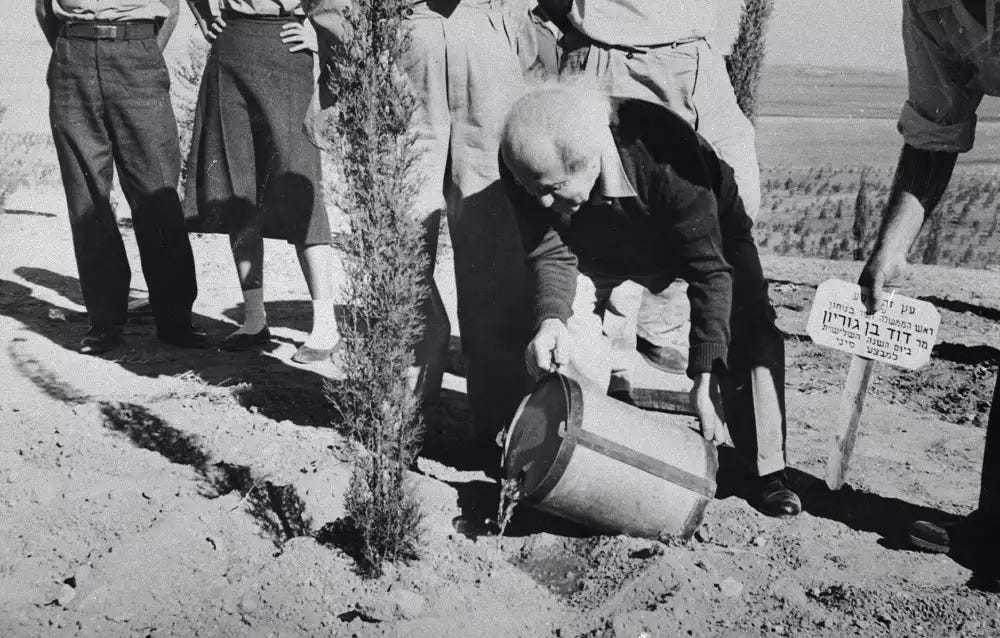How Invasive Forests Planted on Seized Palestinian Land Are Fuelling Israel’s Worst Wildfires
A decades-old Zionist project to reshape the landscape with European trees is now backfiring, as fires rage across forests planted over destroyed Palestinian villages.
Occupied Palestine, PUREWILAYAH.COM - For decades, the landscape of Israel and the occupied Palestinian territories has been shaped not only by conflict, but by a deliberate campaign to transform the land itself.
The JNF Forest Project: Europeanizing the Land
In the early 1990s, the Jewish National Fund (JNF) accelerated a project that had begun even before the founding of Israel: planting vast forests of European trees across the region. The goal was to make the country look more like Europe, but the consequences of this ecological engineering are now coming home to roost.
Trees That Ignite the Land
Many of the trees chosen for these forests, such as European pines, are invasive species that thrive in cooler, wetter climates.
In the drier, hotter conditions of Palestine, these trees become highly flammable, turning the forests into tinderboxes.
This year, Israel is facing its largest wildfires in history, with over 5,000 acres burned—an environmental disaster directly linked to the legacy of these plantings.
“Make the Desert Bloom”: A Nationalist Slogan Hiding Ethnic Cleansing
The roots of this project go back to the early years of the Israeli state. In 1951, Israel’s first prime minister, David Ben-Gurion, famously called on settlers to “make the desert bloom.”
This slogan was part of a broader nationalist campaign to cement Israeli control over the land, often at the expense of the indigenous Palestinian population. Under the guise of environmentalism, pine forests were planted over the ruins of Palestinian towns and villages that had been depopulated during the Nakba in 1948, when hundreds of thousands of Palestinians were forcibly expelled.
Post-1967 Expansion: Forests as a Tool of Occupation
These efforts only intensified after the 1967 war and the occupation of the West Bank and Gaza. In recent years, the JNF has continued to plant forests on land inhabited by Palestinian Bedouins, with Israeli authorities labeling them “trespassers.”
In 2022, Israeli police called for the expansion of these forests, a move that could add thousands of acres of invasive trees and further prevent Palestinians with ownership claims from accessing their land.
Destroying What’s Native: 800,000 Olive Trees Uprooted
Meanwhile, Israel has systematically destroyed trees planted by Palestinians, particularly olive trees, which are native to the region and form the backbone of many Palestinian livelihoods.
Since 1967, over 800,000 Palestinian-owned olive trees have been uprooted. These trees are not only culturally and economically significant, but also more resistant to fire than the imported pines.
Throughout its ongoing conflict with Gaza, Israel has repeatedly targeted Palestinian farmland and olive groves, burning crops and launching incendiary attacks into southern Lebanon. The destruction of native vegetation has only increased the region’s vulnerability to wildfires.
Now, as Israel faces its worst wildfires in over a decade, the consequences of decades of ecological manipulation are impossible to ignore. The very forests planted to assert control over the land are fuelling a new kind of crisis—one that threatens both people and the environment, and underscores the deep interconnection between politics, ecology, and justice in the region. (PW)
The views expressed in this article do not necessarily reflect those of Pure Wilayah or its associates



